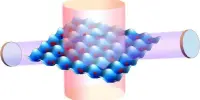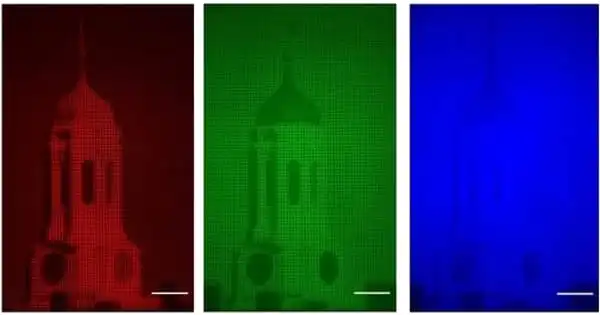In order for quantum computers to be useful in practice, errors must be detected and corrected. A team of experimental physicists at the University of Innsbruck in Austria has now implemented a universal set of computational operations on fault-tolerant quantum bits for the first time, demonstrating how an algorithm can be programmed on a quantum computer so that errors do not ruin the result.
Due to high-quality fabrication, errors in information processing and storage have become rare in modern computers. However, in critical applications where even minor errors can have serious consequences, error correction mechanisms based on redundancy of processed data are still used.
Because quantum computers are inherently more susceptible to disturbances, they will almost certainly always require error correction mechanisms, because otherwise errors will propagate uncontrollably throughout the system and information will be lost. Because the fundamental laws of quantum mechanics prohibit copying quantum information, redundancy can be achieved by distributing logical quantum information into an entangled state of several physical systems, such as multiple individual atoms.
T gates are very fundamental operations. They are especially intriguing because quantum algorithms without T gates can be simulated relatively easily on classical computers, effectively negating any potential speed-up. This is no longer possible with T gate algorithms.
Markus Müller
The team, led by Thomas Monz of the University of Innsbruck’s Department of Experimental Physics and Markus Müller of RWTH Aachen University and Forschungszentrum Jülich in Germany, has now realized for the first time a set of computational operations on two logical quantum bits that can be used to implement any possible operation. “For a real-world quantum computer, we need a universal set of gates with which we can program all algorithms,” explains Lukas Postler, an experimental physicist from Innsbruck.
Fundamental quantum operation realized
The researchers built this universal gate set on an ion trap quantum computer with 16 trapped atoms. The quantum information was stored in two logical quantum bits, each spread across seven atoms.
For the first time, it has been possible to implement two computational gates on fault-tolerant quantum bits that are required for a universal set of gates: a computational operation on two quantum bits (a CNOT gate) and a logical T gate, which is particularly difficult to implement on fault-tolerant quantum bits.

“T gates are very fundamental operations,” theoretical physicist Markus Müller explains. “They are especially intriguing because quantum algorithms without T gates can be simulated relatively easily on classical computers, effectively negating any potential speed-up. This is no longer possible with T gate algorithms.” The T-gate was demonstrated by preparing a special state in a logical quantum bit and transporting it to another quantum bit using an entangled gate operation.
Complexity increases, but accuracy also
The stored quantum information is protected from errors in encoded logical quantum bits. However, this is meaningless without computational operations, which are inherently error-prone.
The researchers implemented logical qubit operations in such a way that errors caused by the underlying physical operations can also be detected and corrected. As a result, they created the first fault-tolerant implementation of a universal set of gates based on encoded logical quantum bits.
“Fault-tolerant operations necessitate more operations than non-fault-tolerant operations. This introduces more errors on the scale of single atoms, but experimental operations on logical qubits are superior to non-fault-tolerant logical operations “Thomas Monz is pleased to inform you. “The effort and complexity increase, but the end result is higher quality.” The researchers also used numerical simulations on traditional computers to check and confirm their experimental results.
All of the building blocks for fault-tolerant computing on a quantum computer have now been demonstrated by the physicists. The next step is to implement these methods on larger, more powerful quantum computers. The methods demonstrated in Innsbruck on an ion trap quantum computer can also be applied to other quantum computer architectures.
Financial support for the research was provided, among other things, by the European Union through the Quantum Flagship Initiative, as well as by the Austrian Research Promotion Agency FFG, the Austrian Science Fund FWF, and the Federation of Austrian Industries Tyrol.
















